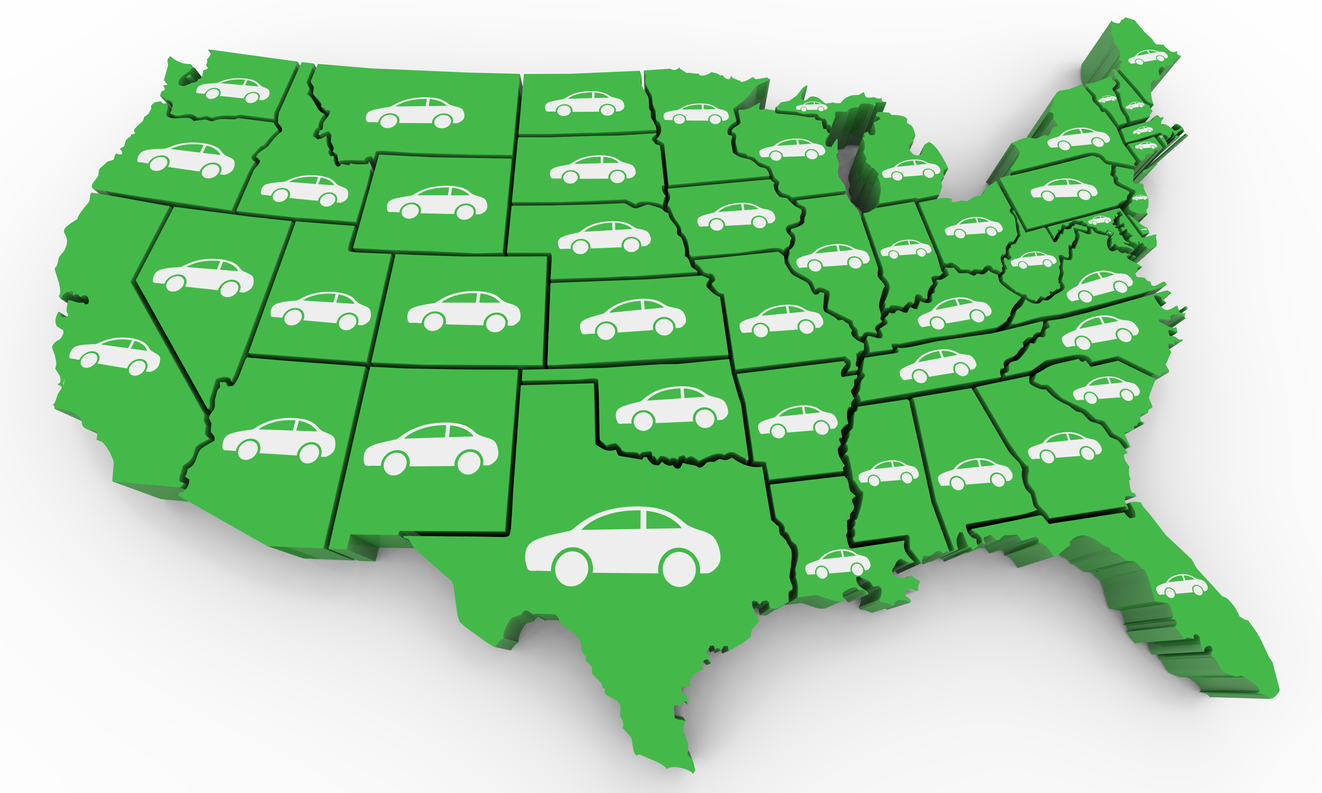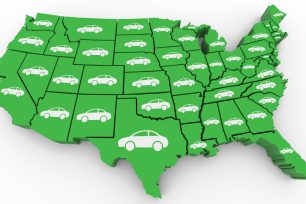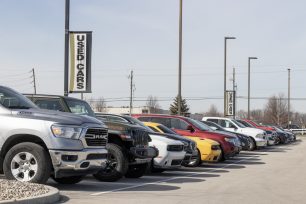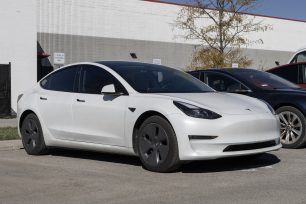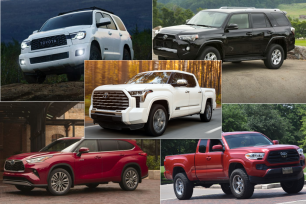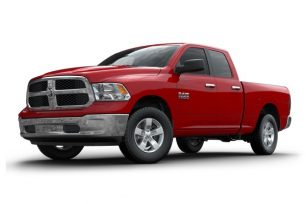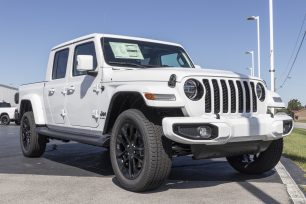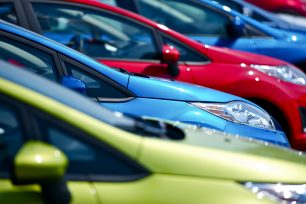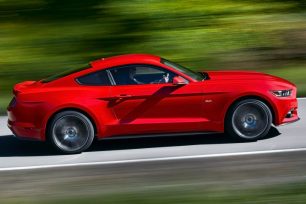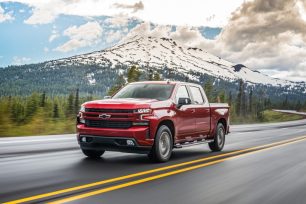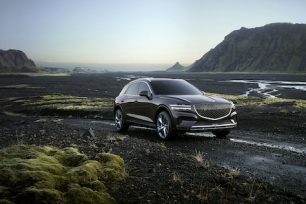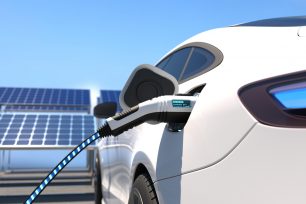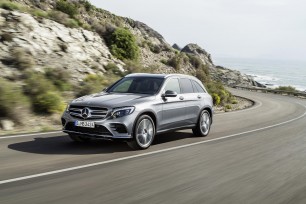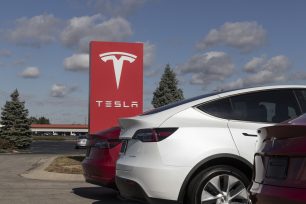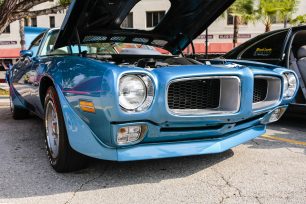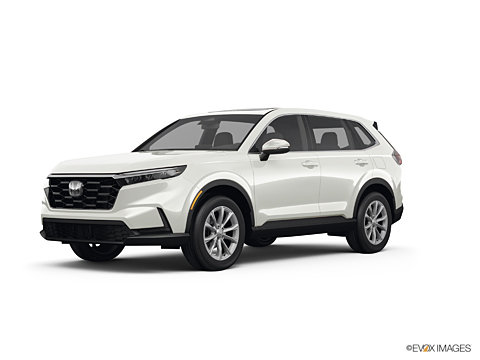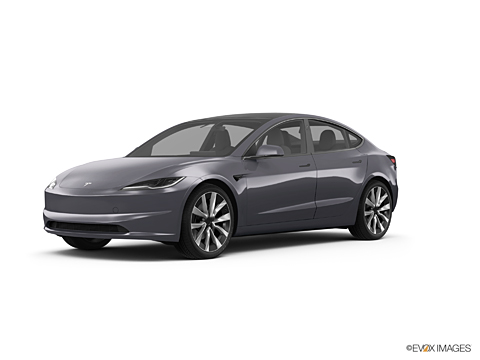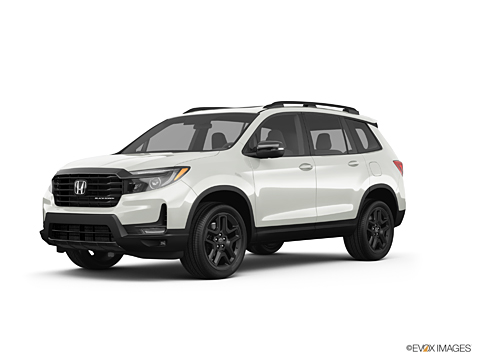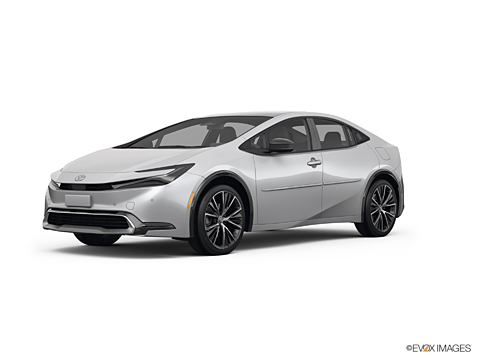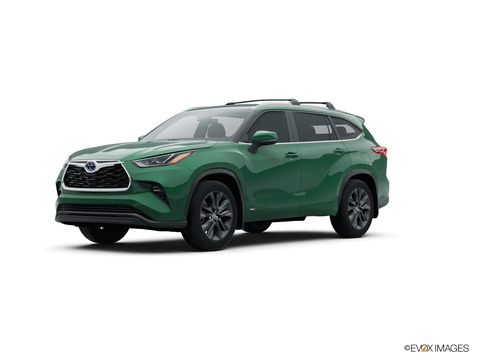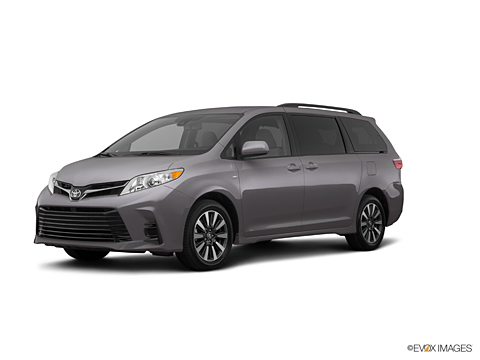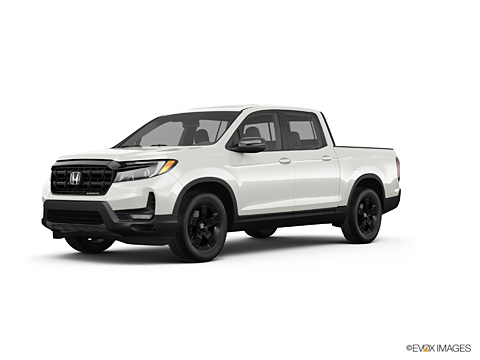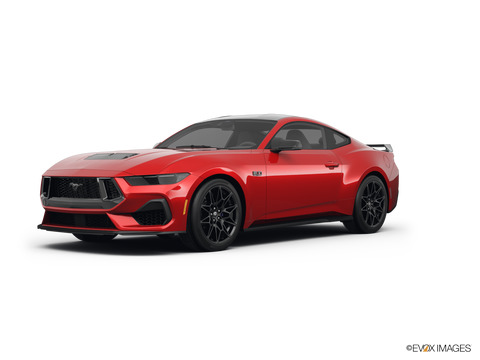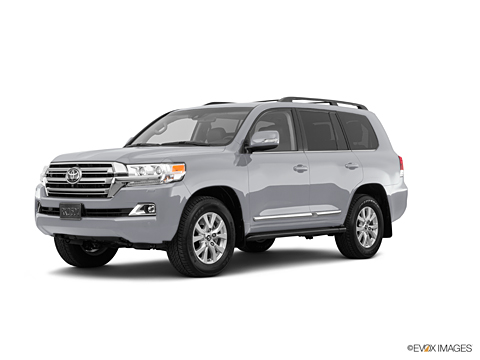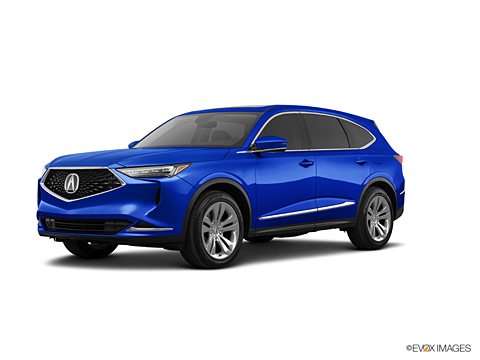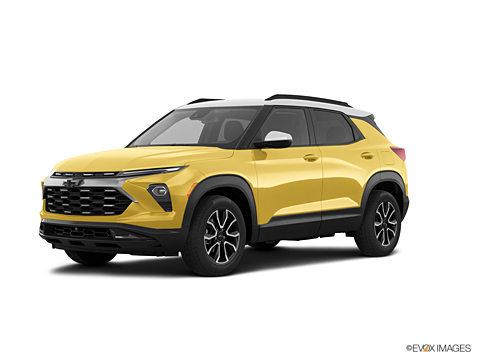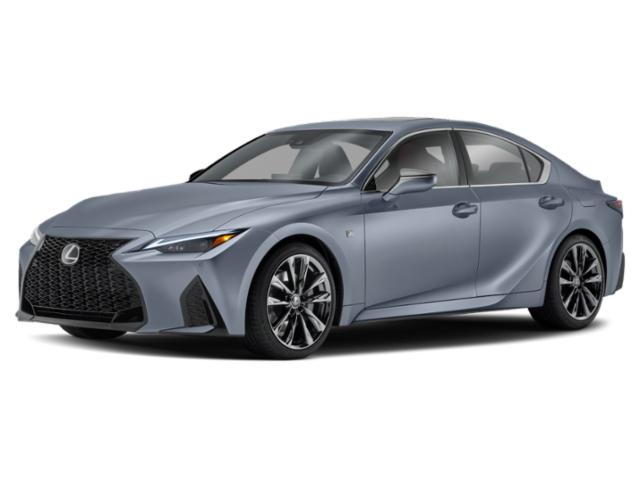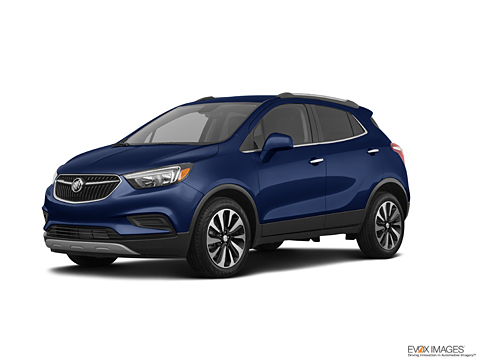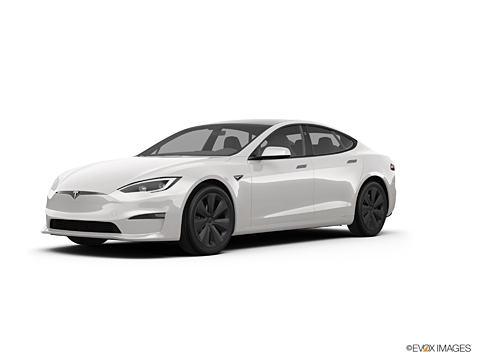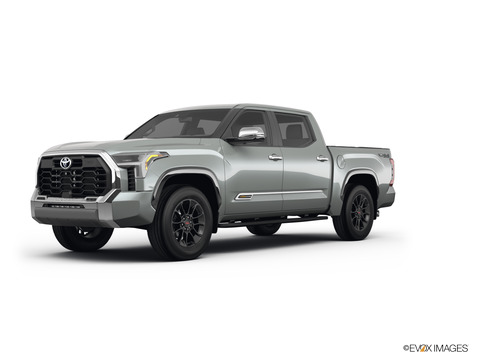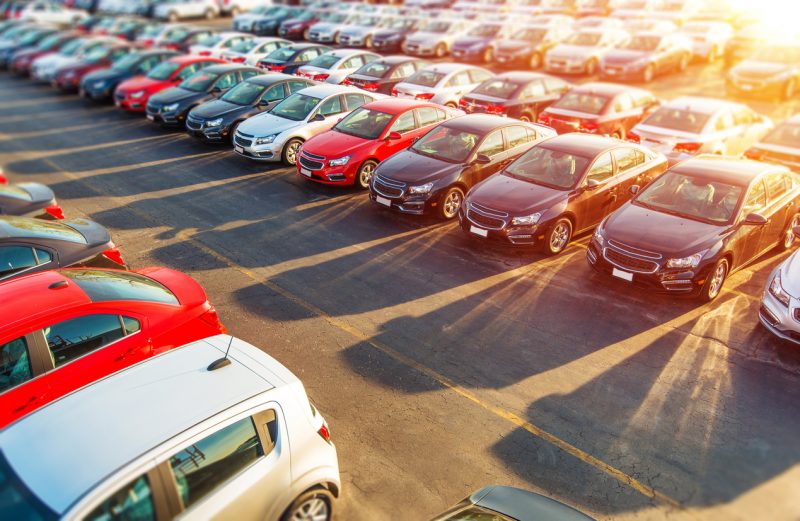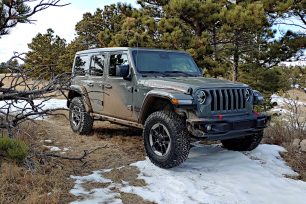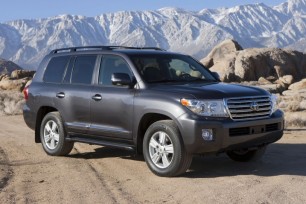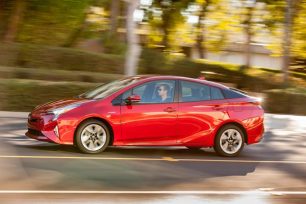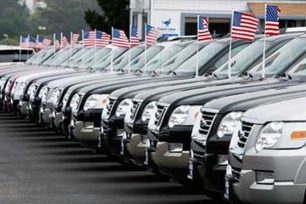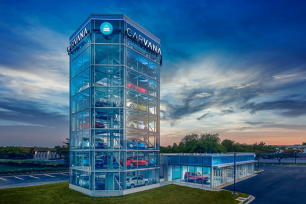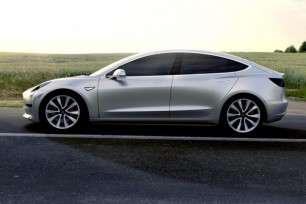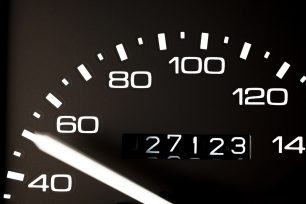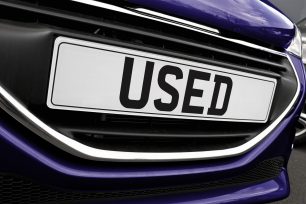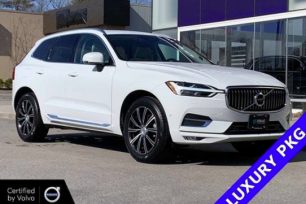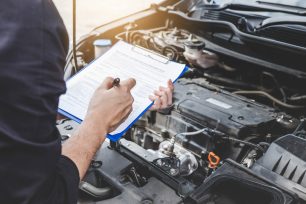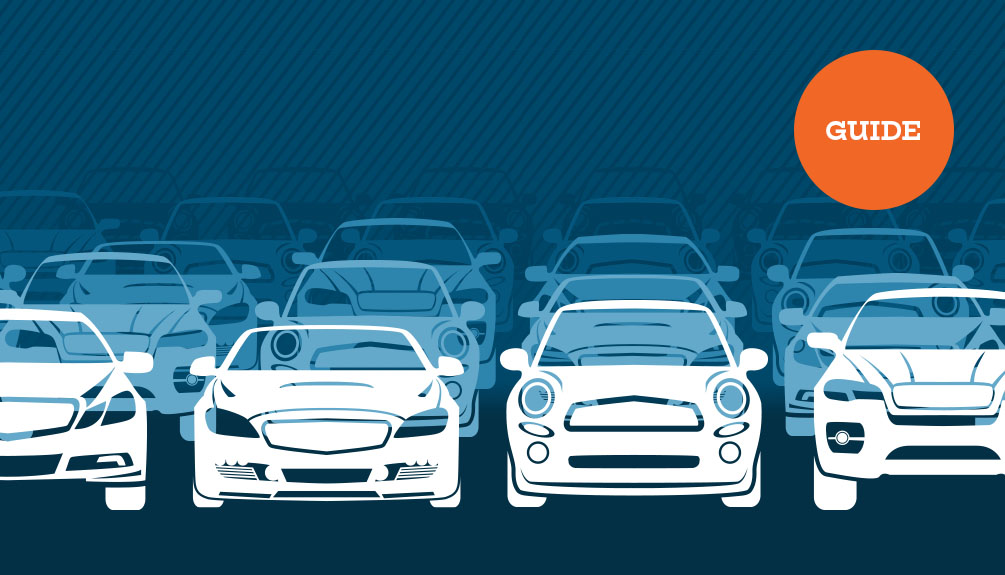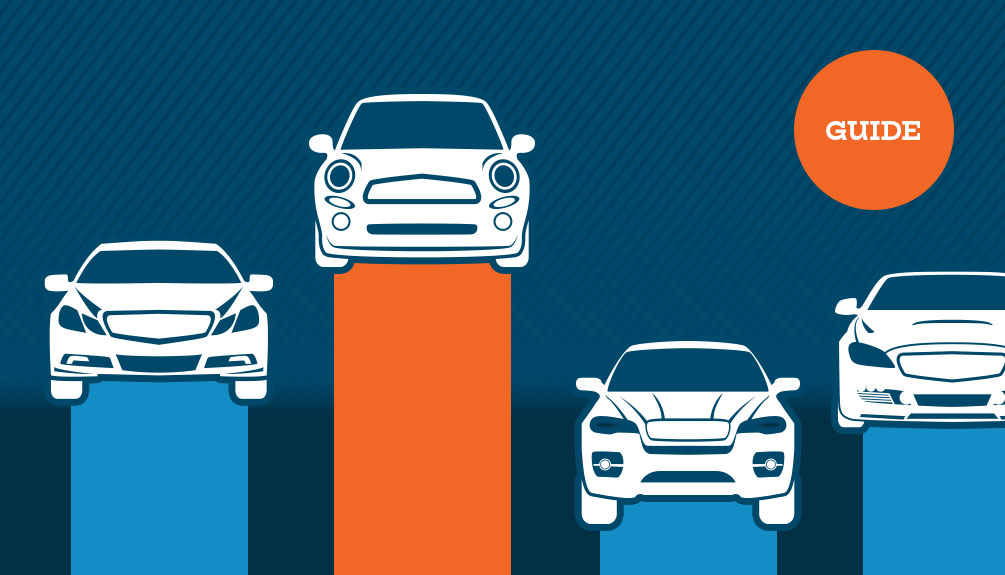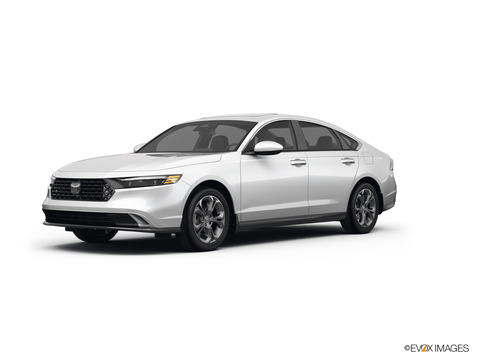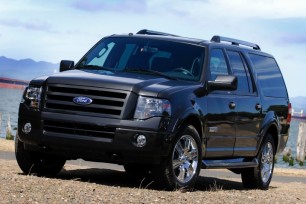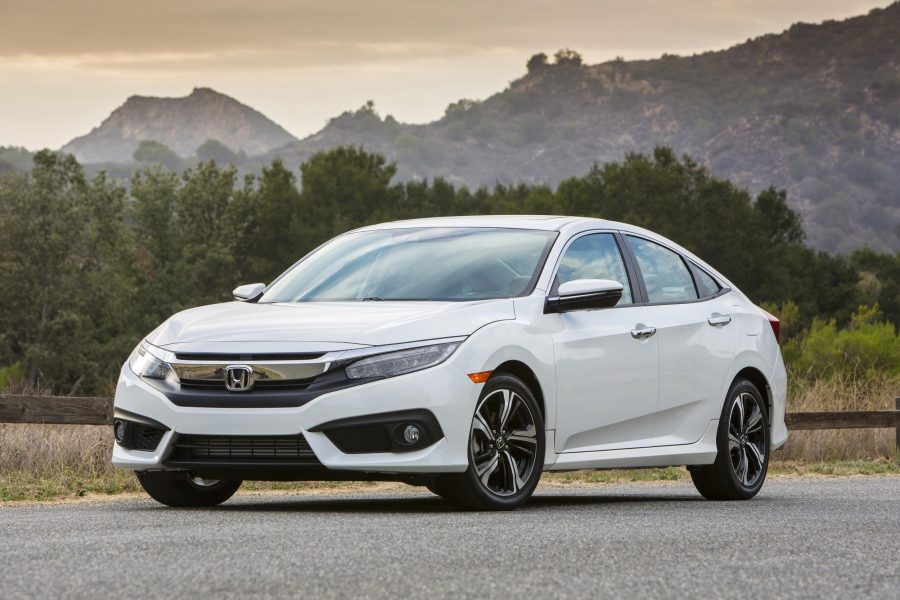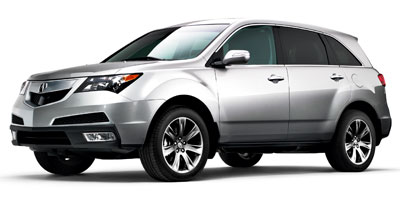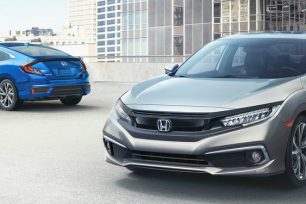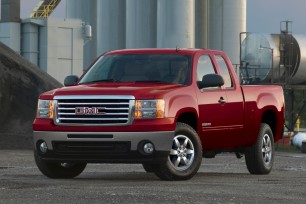Highlights:
- National fuel efficiency is up 11.2 percent, with 1- to 5-year-old cars averaging 27.5 MPG in 2024 compared to 24.8 in 2019
- At the state level, Arkansas, Washington, and California saw the biggest improvements in average MPG between 2019 and 2024, up 31.7, 21.9, and 19.4 percent, respectively
- Arkansas also led in combined hybrid and electric vehicle market share growth, rising 875.4 percent, followed by Louisiana (299.1 percent) and New Jersey (285.8 percent)
- South Carolina, Rhode Island, and North Dakota had the smallest improvements in MPG while also showing some of the smallest improvements hybrid and electric vehicle sales
- Hawaii, Michigan, and South Carolina had the lowest growth in combined hybrid and electric vehicle sales, though even these states more than doubled their hybrid/EV share between 2019 and 2024
- While hybrid sales are rising in every state, the overall hybrid segment’s MPG is dropping due to an increasing percentage of hybrid truck and SUV sales
The fuel efficiency of America’s cars continues to improve due to higher MPG ratings for late-model internal combustion models along with increasing sales of hybrid and electric vehicles.. Much of this is driven by government regulations, but consumers are also looking to spend less to fuel their cars, which gives fuel efficient models an advantage in the market.
While the fuel efficiency for 1- to 5-year-old models is up 11.2 percent nationally, not all states are contributing equally. Arkansas led the nation in both growing its MPG figures and increasing its hybrid and electric vehicle market share. The state has experienced a 31.7 percent improvement in fuel efficiency since 2019, from 22.8 MPG to 30.1 MPG. Arkansas’ combined hybrid and electric vehicle market share ballooned from 0.9 percent to 8.9 percent, an impressive 875 percent growth rate that clearly contributed to the state’s top rank in rising fuel efficiency.
iSeeCars analyzed over 19 million 1- to 5-year-old cars sold in 2019 and 2024, both nationally and by state, to compare average MPGs and calculate the 5-year change in market share of hybrid and electric vehicles.
“States like California and Washington are known for their efforts to improve fuel economy and reduce emissions, so it’s not surprising to see them rank well in this area,” said Karl Brauer, iSeeCars Executive Analyst. “But seeing Arkansas outrank both states in the areas of rising fuel efficiency and growing hybrid and EV market share was something we couldn’t have predicted. Arkansas ranks among the top five states for growth in hybrid, plug-in hybrid, and EV categories, showing rapid adoption across a broad spectrum of fuel-efficient vehicle types.”
The Best States for MPG and Hybrid/Electric Vehicle Growth
Washington state ranked second for improved MPG figures at 21.9 percent growth, with California coming in third at 19.4 percent.“Unlike Arkansas, Washington and California were already above the national MPG average in 2019, making their high growth over the last five years more challenging and even more impressive,” said Brauer.
| Top 10 States With the Largest Improvement in Average MPG: 2019-2024 - iSeeCars Study | |||||
| Rank | State | Avg MPG 2024 | Avg MPG 2019 | % Change | Green Vehicle Share 2024 |
| 1 | Arkansas | 30.1 | 22.8 | 31.7% | 8.9% |
| 2 | Washington | 31.7 | 26.0 | 21.9% | 12.3% |
| 3 | California | 33.5 | 28.1 | 19.4% | 14.4% |
| 4 | Maryland | 29.8 | 25.2 | 18.2% | 9.0% |
| 5 | Nevada | 29.6 | 25.6 | 15.7% | 8.8% |
| 6 | Utah | 28.9 | 25.0 | 15.7% | 9.1% |
| 7 | Virginia | 28.7 | 24.9 | 15.4% | 7.8% |
| 8 | Vermont | 28.0 | 24.3 | 14.9% | 7.5% |
| 9 | Oregon | 29.5 | 26.1 | 12.8% | 10.2% |
| 10 | Oklahoma | 26.1 | 23.2 | 12.8% | 3.9% |
| National Average | 27.5 | 24.8 | 11.2% | 6.4% | |
| Top 10 States with the Largest Growth in Hybrid/EV Adoption, 2019-2024 - iSeeCars Study | ||||
| Rank | State | % Share 2024 | % Share 2019 | % Change |
| 1 | Arkansas | 8.9% | 0.9% | 875.4% |
| 2 | Louisiana | 2.9% | 0.7% | 299.1% |
| 3 | New Jersey | 5.8% | 1.5% | 285.8% |
| 4 | West Virginia | 3.2% | 0.8% | 280.6% |
| 5 | Maryland | 9.0% | 2.4% | 268.8% |
| 6 | North Dakota | 2.9% | 0.8% | 267.9% |
| 7 | Montana | 3.8% | 1.1% | 254.4% |
| 8 | Wyoming | 2.9% | 0.8% | 247.2% |
| 9 | Minnesota | 6.3% | 1.8% | 243.2% |
| 10 | Maine | 5.6% | 1.7% | 225.5% |
| National Average | 6.4% | 2.3% | 172.9% | |
The Worst States for MPG and Hybrid/Electric Vehicle Growth
ed by South Carolina, Rhode Island, and North Dakota, these 10 states had the smallest MPG improvements over the past five years. South Carolina bumped its average from 24.4 to 25.4 MPG and Rhode Island increased from 25.4 to 26.5 MPG. Both states saw 4.1 percent MPG growth, with third-ranked North Dakota doing a bit better at 5.5 percent growth, from 21.4 to 22.6 MPG between 2019 and 2024.| Top 10 States With the Smallest Improvement in Average MPG: 2019-2024 - iSeeCars Study | |||||
| Rank | State | Avg MPG 2024 | Avg MPG 2019 | % Change | Green Vehicle Share 2024 |
| 1 | South Carolina | 25.4 | 24.4 | 4.1% | 3.6% |
| 2 | Rhode Island | 26.5 | 25.4 | 4.1% | 5.1% |
| 3 | North Dakota | 22.6 | 21.4 | 5.5% | 2.9% |
| 4 | South Dakota | 23.1 | 21.8 | 5.6% | 2.7% |
| 5 | Mississippi | 24.8 | 23.5 | 5.7% | 2.7% |
| 6 | Wyoming | 22.7 | 21.4 | 5.8% | 2.9% |
| 7 | Alabama | 25.5 | 24.1 | 6.0% | 3.6% |
| 8 | New Hampshire | 26.0 | 24.6 | 6.0% | 5.0% |
| 9 | Kentucky | 25.3 | 23.7 | 6.5% | 4.1% |
| 10 | Iowa | 24.3 | 22.8 | 6.6% | 4.1% |
| National Average | 27.5 | 24.8 | 11.2% | 6.4% | |
When ranking states with the lowest change in hybrid and electric vehicle adoption since 2019, California and Oregon are in the top 10. Both states had substantially more of these vehicles than the national average five years ago, reflecting the difficulty in maintaining an aggressive hybrid and EV growth rate after getting above an 8 percent to 10 percent share.
| Top 10 States With the Least Growth in Green Vehicle Adoption: 2019-2024 - iSeeCars Study | ||||
| Rank | State | % Share 2024 | % Share 2019 | % Change |
| 1 | Hawaii | 6.5% | 3.2% | 103.3% |
| 2 | Michigan | 3.7% | 1.7% | 113.2% |
| 3 | South Carolina | 3.6% | 1.7% | 116.7% |
| 4 | Oregon | 10.2% | 4.6% | 123.6% |
| 5 | California | 14.4% | 6.3% | 129.4% |
| 6 | New Mexico | 4.9% | 2.1% | 140.6% |
| 7 | Arizona | 7.9% | 3.2% | 144.6% |
| 8 | Alaska | 4.8% | 1.9% | 152.7% |
| 9 | Kansas | 5.1% | 2.0% | 156.6% |
| 10 | Ohio | 4.5% | 1.7% | 158.8% |
| National Average | 6.4% | 2.3% | 172.9% | |
The Best and Worst States for Electric Vehicle Adoption
Looking at pure electric vehicle adoption over the past five years reflects massive growth, with the top 10 states increasing more than twice as fast as the national average. West Virginia had too few EVs in 2019 to record, making it impossible to calculate its growth rate. Arkansas again shows rapid alternative fuel vehicle growth, with a 13,950 percent increase in EV market share from 0 percent to 5.6 percent since 2019.| Top 10 States With the Largest Growth in Electric Vehicle Adoption: 2019-2024 - iSeeCars Study | ||||
| Rank | State | % Share 2024 | % Share 2019 | % Change |
| 1 | West Virginia | 0.3% | 0.0%* | --* |
| 2 | Arkansas | 5.6% | 0.0% | 13950.3% |
| 3 | Louisiana | 0.8% | 0.0% | 2915.6% |
| 4 | New Jersey | 2.6% | 0.1% | 1843.2% |
| 5 | Maryland | 4.0% | 0.2% | 1839.8% |
| 6 | Missouri | 2.1% | 0.1% | 1789.5% |
| 7 | Alaska | 0.8% | 0.0% | 1651.0% |
| 8 | Montana | 0.4% | 0.0% | 1589.6% |
| 9 | Delaware | 1.3% | 0.1% | 1574.5% |
| 10 | Virginia | 3.2% | 0.2% | 1532.2% |
| National Average | 2.5% | 0.3% | 724.1% | |
Many of the states with the smallest growth in electric vehicle adoption also had relatively high EV market share five years ago, including Hawaii, Oregon, Arizona, Washington, and Colorado. This suggests increased resistance to growing EV market share in a local market once it reaches a given level.
| Top 10 States With the Least Growth in Electric Vehicle Adoption: 2019-2024 - iSeeCars Study | ||||
| Rank | State | % Share 2024 | % Share 2019 | % Change |
| 1 | South Carolina | 0.7% | 0.2% | 212.3% |
| 2 | Hawaii | 3.2% | 1.0% | 225.9% |
| 3 | Oregon | 3.6% | 1.0% | 250.1% |
| 4 | Idaho | 1.2% | 0.3% | 284.6% |
| 5 | Rhode Island | 1.3% | 0.3% | 368.4% |
| 6 | Arizona | 3.6% | 0.7% | 391.7% |
| 7 | Wyoming | 0.3% | 0.1% | 419.7% |
| 8 | Washington | 6.0% | 1.1% | 443.1% |
| 9 | Colorado | 2.8% | 0.5% | 444.2% |
| 10 | Nebraska | 0.9% | 0.2% | 468.7% |
| National Average | 2.5% | 0.3% | 724.1% | |
Hybrid SUVs and Trucks Are Lowering the Hybrid Segment’s MPG
While hybrid vehicle sales and market share are up in every state, the average MPG of hybrids is down. This is due to the increased sales and market share of hybrid SUVs and trucks relative to hybrid passenger cars five years ago. Nationally, hybrid SUVs increased their share within the hybrid segment from 14.3 percent to 48.5 percent. Hybrid trucks grew from 0.0 percent to 9.2 percent of the segment. Hybrid passenger cars dropped from 85.7 percent to 33.8 percent share, mirroring the trend of increased gasoline SUV and truck sales relative to car sales over the past five years.It’s likely many of these hybrid SUV and truck sales are replacing gasoline SUVs and trucks with lower MPG ratings, so the shift to hybrids is still improving the overall MPG figures at the state and national level. States like Virginia, Delaware and California saw the smallest drop in their hybrid MPG numbers between 2019 and 2024.
| Top 10 States With the Smallest Drop in Average MPG of Hybrid Vehicles:, 2019-2024 - iSeeCars Study | ||||
| Rank | State | Avg MPG 2024 | Avg MPG 2019 | % Change |
| 1 | Virginia | 40.6 | 41.9 | -3.0% |
| 2 | Delaware | 39.8 | 41.3 | -3.8% |
| 3 | California | 42.1 | 43.9 | -4.0% |
| 4 | Connecticut | 39.7 | 41.5 | -4.3% |
| 5 | Massachusetts | 39.8 | 41.6 | -4.3% |
| 6 | Maryland | 40.0 | 41.9 | -4.4% |
| 7 | New Jersey | 39.7 | 41.6 | -4.4% |
| 8 | Washington | 40.6 | 42.6 | -4.8% |
| 9 | Pennsylvania | 39.4 | 41.5 | -4.9% |
| 10 | Illinois | 39.5 | 41.6 | -4.9% |
| National Average | 39.9 | 42.6 | -6.3% | |
| Top 10 States With the Largest Drop in Average MPG of Hybrid Vehicles: 2019-2024 - iSeeCars Study | ||||
| Rank | State | Avg MPG Hybrid 2024 | Avg MPG Hybrid 2019 | % Change Hybrid MPG 2019 – 2024 |
| 1 | Alaska | 36.6 | 43.5 | -15.9% |
| 2 | Montana | 36.6 | 42.3 | -13.5% |
| 3 | Wyoming | 36.0 | 41.3 | -13.0% |
| 4 | North Dakota | 36.8 | 41.6 | -11.6% |
| 5 | Maine | 38.9 | 43.3 | -10.1% |
| 6 | Mississippi | 38.6 | 42.8 | -9.8% |
| 7 | Idaho | 38.4 | 42.2 | -8.9% |
| 8 | Michigan | 38.6 | 42.3 | -8.7% |
| 9 | Louisiana | 38.7 | 42.4 | -8.7% |
| 10 | Alabama | 38.9 | 42.5 | -8.5% |
| National Average | 39.9 | 42.6 | -6.3% | |
Changes in Average MPG for Largest Metropolitan Areas
Among the nation’s 50 largest metro areas by population, San Francisco-Oakland-San Jose, CA had the largest improvement in MPG, more than double the national average, while Greenville-Spartanburg, SC had the smallest at close to a quarter the national improvement.
| Improvement in Average MPG for 50 Largest Metro Areas, 2019-2024 - iSeeCars Study | |||||
| Rank | Metro Area | Avg MPG 2024 | Avg MPG 2019 | % Change | Green Vehicle Share 2024 |
| 1 | San Francisco-Oakland-San Jose, CA | 36.4 | 28.9 | 25.9% | 19.7% |
| 2 | Seattle-Tacoma, WA | 32.8 | 26.5 | 23.5% | 13.4% |
| 3 | San Diego, CA | 33.9 | 27.8 | 21.9% | 15.0% |
| 4 | Washington, DC (Hagerstown, MD) | 30.6 | 25.6 | 19.8% | 10.2% |
| 5 | Sacramento-Stockton-Modesto, CA | 32.3 | 27.0 | 19.3% | 13.0% |
| 6 | Los Angeles, CA | 33.6 | 28.3 | 18.9% | 14.1% |
| 7 | Kansas City, MO | 28.0 | 24.0 | 16.6% | 7.4% |
| 8 | Dallas-Ft. Worth, TX | 28.2 | 24.3 | 16.3% | 6.3% |
| 9 | Salt Lake City, UT | 28.9 | 25.0 | 15.8% | 9.0% |
| 10 | Las Vegas, NV | 29.9 | 25.9 | 15.5% | 8.7% |
| 11 | Austin, TX | 28.5 | 24.8 | 15.1% | 7.4% |
| 12 | Baltimore, MD | 28.7 | 25.1 | 14.5% | 7.7% |
| 13 | Oklahoma City, OK | 26.6 | 23.3 | 14.3% | 4.6% |
| 14 | Orlando-Daytona Beach, FL | 28.5 | 25.2 | 12.8% | 6.0% |
| 15 | Chicago, IL | 28.0 | 24.9 | 12.5% | 7.2% |
| 16 | Atlanta, GA | 28.0 | 24.9 | 12.2% | 6.4% |
| 17 | Fresno-Visalia, CA | 29.5 | 26.4 | 11.9% | 8.2% |
| 18 | Portland, OR | 29.7 | 26.6 | 11.7% | 10.3% |
| 19 | Phoenix, AZ | 28.8 | 25.8 | 11.5% | 8.1% |
| 20 | Cincinnati, OH | 27.7 | 24.8 | 11.3% | 6.0% |
| 21 | Philadelphia, PA | 28.1 | 25.3 | 11.2% | 6.2% |
| 22 | Denver, CO | 27.2 | 24.5 | 11.1% | 7.6% |
| 23 | Tampa-St Petersburg (Sarasota), FL | 27.7 | 24.9 | 11.0% | 5.8% |
| 24 | Minneapolis-St. Paul, MN | 26.2 | 23.6 | 11.0% | 6.6% |
| 25 | Miami-Ft. Lauderdale, FL | 28.2 | 25.5 | 10.6% | 5.0% |
| 26 | New York, NY | 27.6 | 25.0 | 10.4% | 5.6% |
| 27 | Boston, MA-Manchester, NH | 27.3 | 24.8 | 9.9% | 6.3% |
| 28 | Indianapolis, IN | 26.6 | 24.2 | 9.8% | 5.3% |
| 29 | Charlotte, NC | 27.2 | 24.9 | 9.3% | 5.6% |
| 30 | Houston, TX | 26.3 | 24.1 | 9.0% | 4.5% |
| 31 | Raleigh-Durham (Fayetteville), NC | 27.1 | 24.9 | 8.7% | 6.0% |
| 32 | San Antonio, TX | 25.9 | 23.8 | 8.7% | 4.5% |
| 33 | Jacksonville, FL | 27.2 | 25.0 | 8.7% | 5.1% |
| 34 | St. Louis, MO | 25.6 | 23.6 | 8.4% | 3.9% |
| 35 | Grand Rapids-Kalamazoo, MI | 25.1 | 23.3 | 8.1% | 5.0% |
| 36 | Nashville, TN | 26.0 | 24.1 | 7.9% | 4.6% |
| 37 | West Palm Beach-Ft. Pierce, FL | 27.2 | 25.2 | 7.8% | 5.0% |
| 38 | Milwaukee, WI | 26.2 | 24.3 | 7.8% | 5.4% |
| 39 | Greensboro-Winston Salem, NC | 26.5 | 24.6 | 7.5% | 4.9% |
| 40 | Albuquerque-Santa Fe, NM | 26.0 | 24.2 | 7.4% | 5.2% |
| 41 | Hartford & New Haven, CT | 27.0 | 25.2 | 7.2% | 5.4% |
| 42 | Louisville, KY | 25.7 | 24.0 | 7.2% | 4.6% |
| 43 | Detroit, MI | 25.5 | 23.8 | 7.1% | 4.1% |
| 44 | Columbus, OH | 26.7 | 24.9 | 7.0% | 5.1% |
| 45 | Harrisburg-Lancaster-York, PA | 26.3 | 24.6 | 6.9% | 5.6% |
| 46 | Norfolk-Portsmouth-Newport News,VA | 26.5 | 24.8 | 6.7% | 4.6% |
| 47 | Birmingham, AL | 25.9 | 24.4 | 6.2% | 3.9% |
| 48 | Pittsburgh, PA | 25.5 | 24.1 | 5.8% | 4.1% |
| 49 | Cleveland-Akron (Canton), OH | 26.4 | 24.9 | 5.7% | 3.9% |
| 50 | Greenville-Spartanburg, SC | 25.5 | 24.8 | 2.9% | 4.3% |
| National Average | 27.5 | 24.8 | 11.2% | 6.4% | |
Methodology
iSeeCars analyzed over 19 million 1- to 5-year-old used cars sold between January and September of 2019 and 2024. The average MPG of these vehicles was aggregated nationally and by state and compared across the two periods. Note that MPGe was used for plug-in hybrids and electric vehicles. The share of hybrids, plug-in hybrids, and electric vehicles was also calculated and compared across the two timeframes.
About iSeeCars.com

